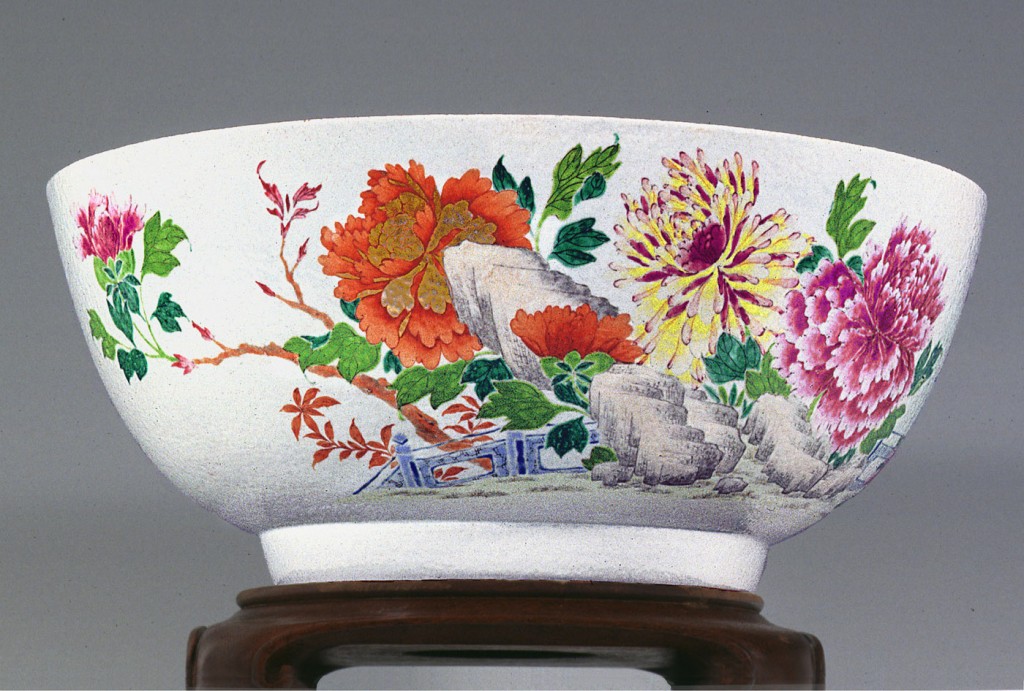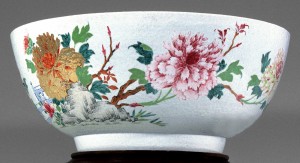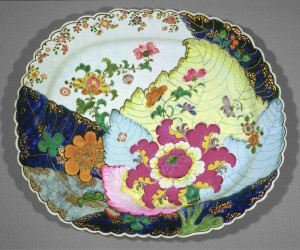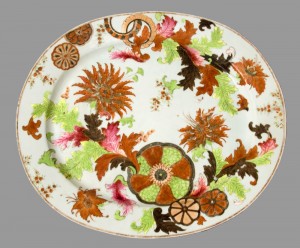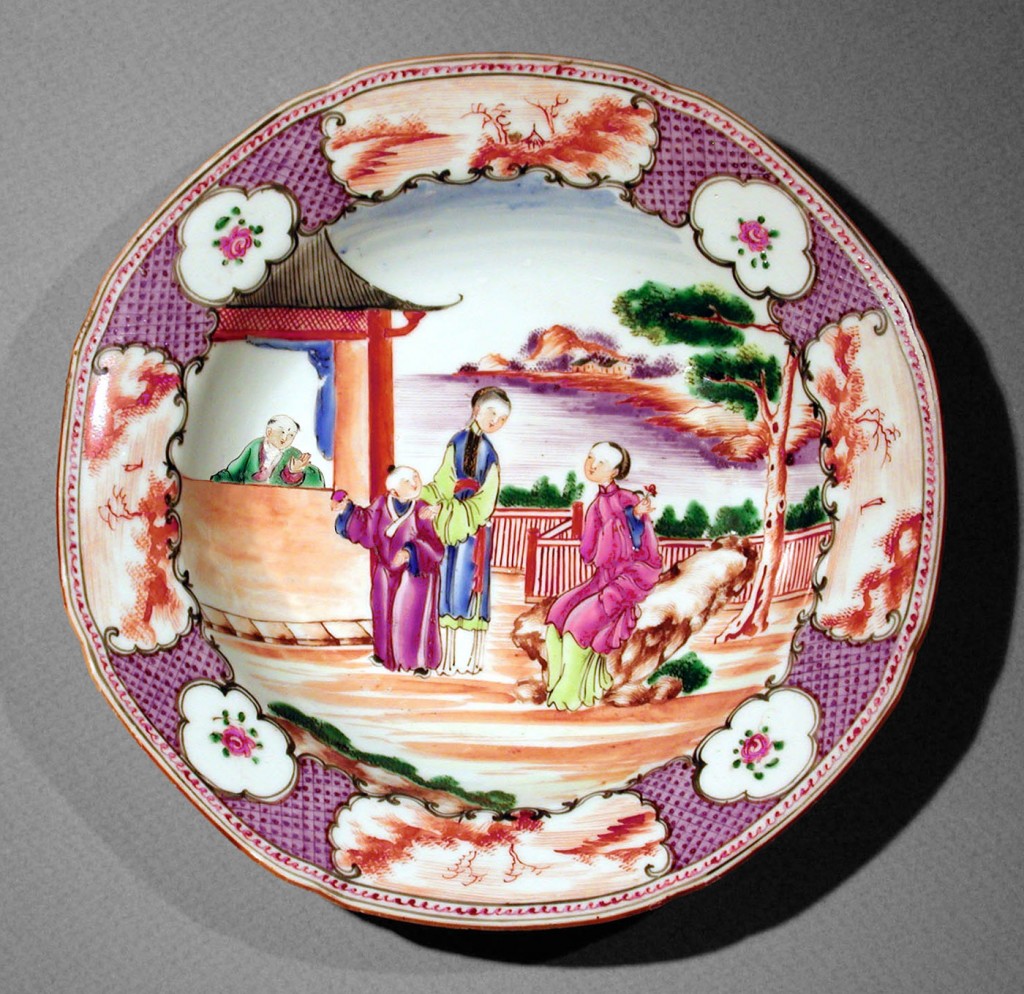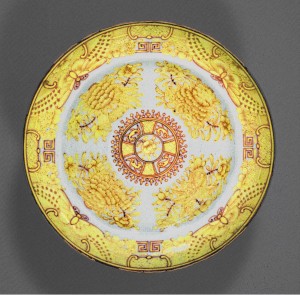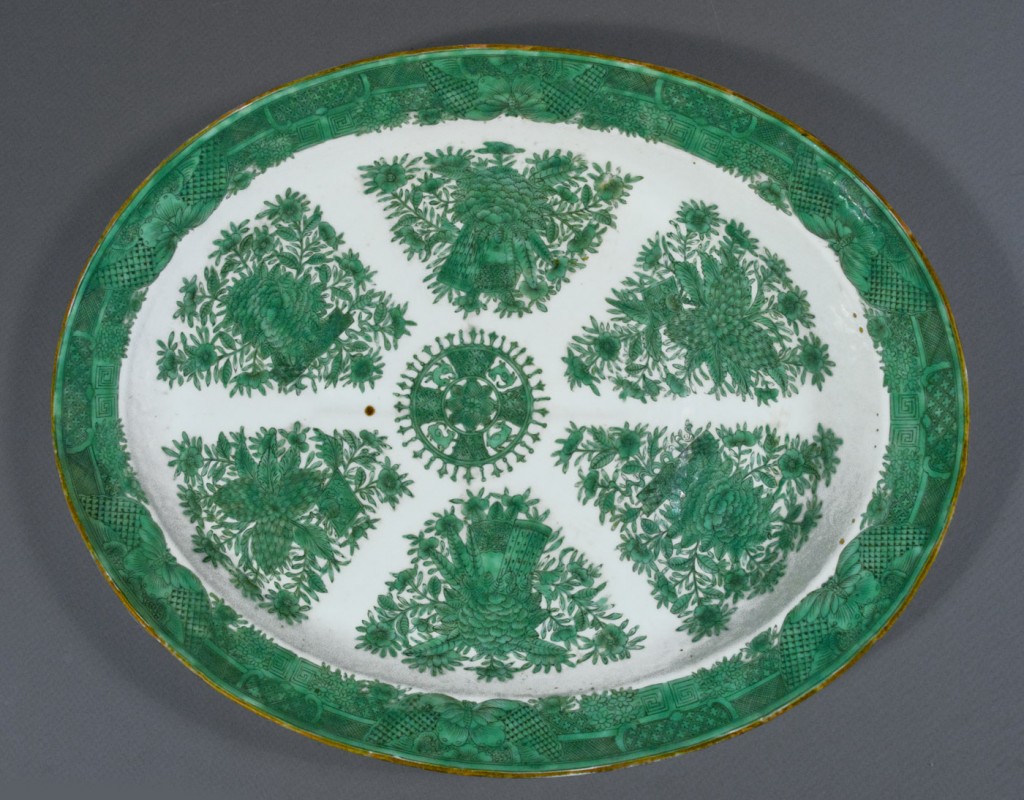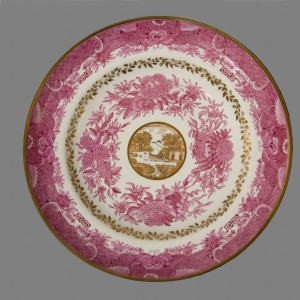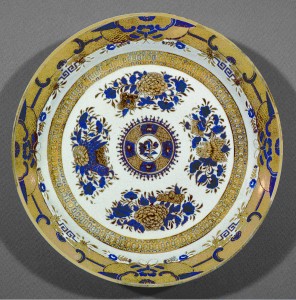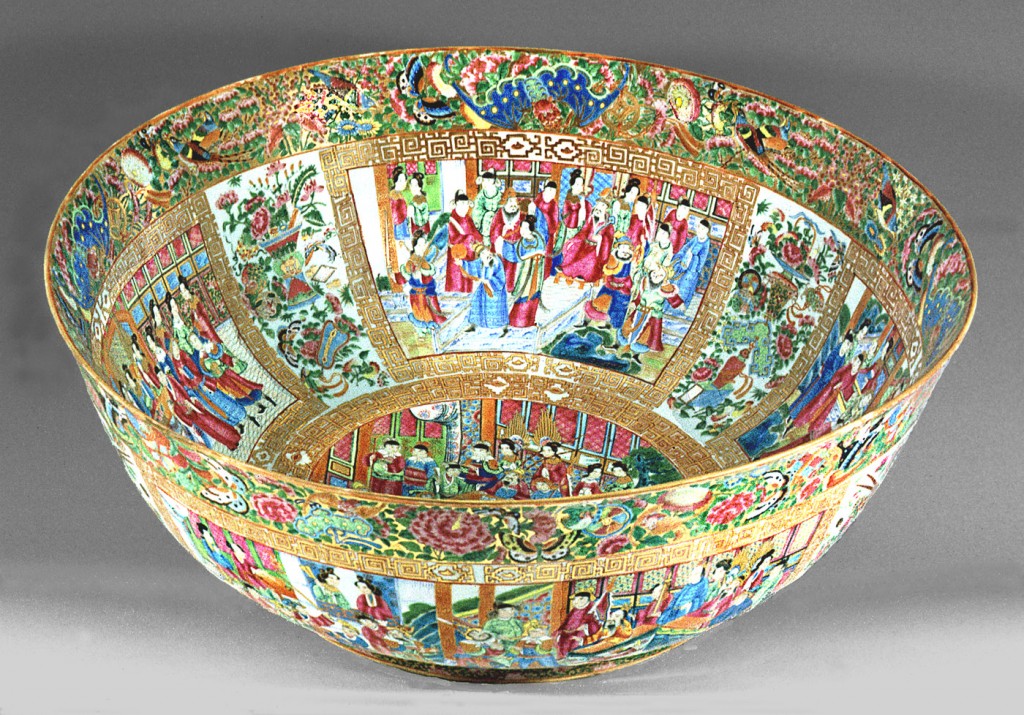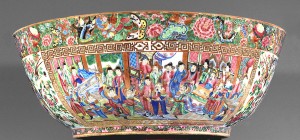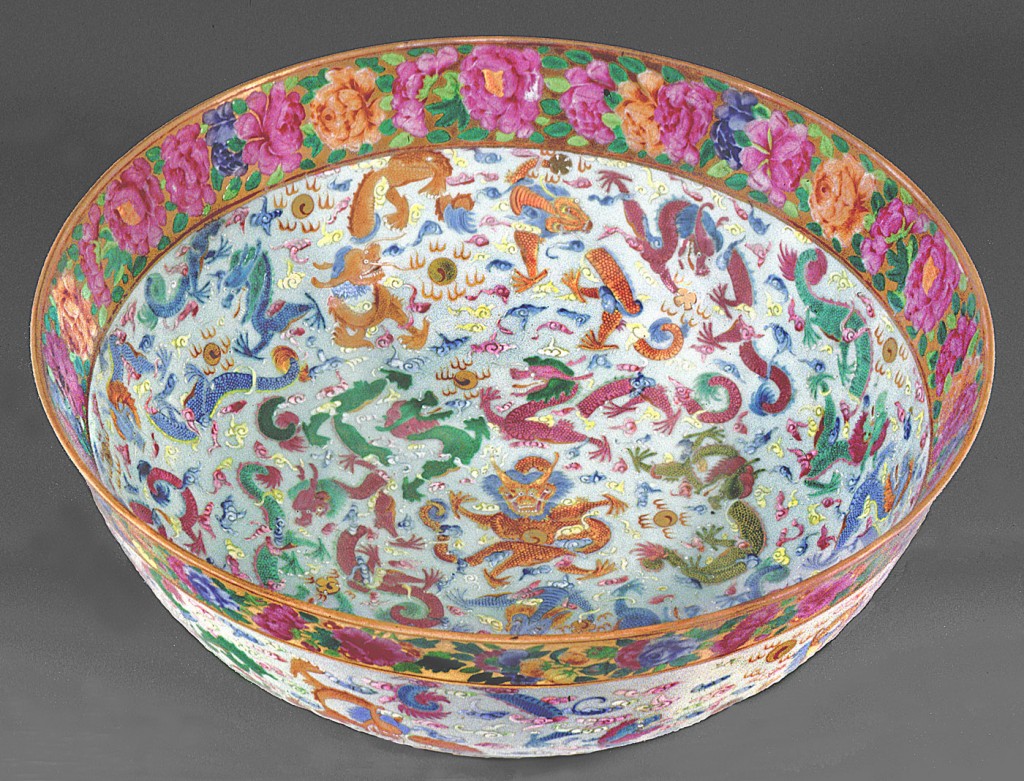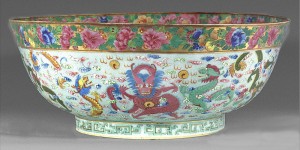The enameled and gilt patterns on these dishes and bowls reflect types which appealed both to British and American consumers.
Legend has it that orange-peel textures like that seen on this bowl were prized by the English because they shimmered by candlelight. The quality of the painting and gilding seen here is exceptional. It has been suggested that this bowl once belonged to the Peale family of artists.
Dishes, 1790–1800 (left), 1800–1820 (right)
Known in the West as “tobacco leaf,” the pattern on the earlier dish (left) was probably inspired by the leaves of a Southeast Asian plant or perhaps an Asian textile pattern. The slightly later dish (right) bears a highly stylized version of the design. Both patterns were popular in America and England and were imitated on English ceramics.
Chinese figural patterns in these colors, like the famille rose palette, were commonly referred to in the late 1700s and 1800s as mandarin. Such designs reappear more crudely executed on some English bone china and earthenware. The pink scale border imitates ceramics made in the French taste.
This Chinese dish, possibly decorated in England, may have replaced a lost or damaged piece from a Worcester “Dragon in Compartments” pattern service from about 1770. Worcester’s design echoed early 18th-century Chinese famille verte types and was imitated at other English factories.
Fitzhugh Pattern Porcelain for British and American Markets, 1780–1820
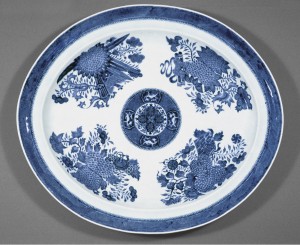
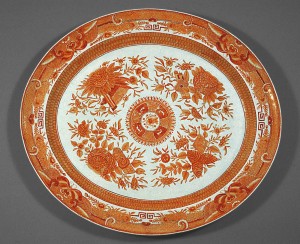
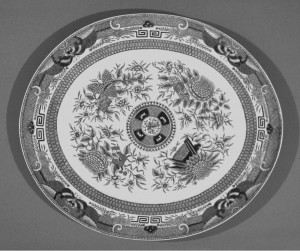 The name Fitzhugh for this pattern derives from an association with a blue and white service ordered around 1780 by Englishman Thomas Fitzhugh. Fitzhugh served from 1786 to 1800 in Guangzhou (Canton) as a director of the British East India Company.
The name Fitzhugh for this pattern derives from an association with a blue and white service ordered around 1780 by Englishman Thomas Fitzhugh. Fitzhugh served from 1786 to 1800 in Guangzhou (Canton) as a director of the British East India Company.
Fitzhugh porcelain survives in a large range of dinner-, beverage- and ornamental-ware shapes and was popular in America. Underglaze blue 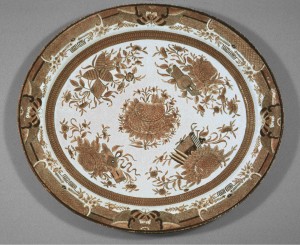 Fitzhugh designs are most common, and some were copied on English ceramics. Yellow, black, or mulberry enameled Chinese Fitzhugh wares, as well as those bearing blue enamel and gilt ornament, are particularly rare. Some Fitzhugh porcelain made for the American market bears an eagle and shield said to have been copied from the Great Seal of the United States.
Fitzhugh designs are most common, and some were copied on English ceramics. Yellow, black, or mulberry enameled Chinese Fitzhugh wares, as well as those bearing blue enamel and gilt ornament, are particularly rare. Some Fitzhugh porcelain made for the American market bears an eagle and shield said to have been copied from the Great Seal of the United States.
Other popular wares
On this monumental bowl, the color range was inspired by famille rose enamels and, like the figural style, is sometimes referred to as mandarin. Such designs are known on nearly all British and American market porcelain shapes and the patterns were imitated at many Western ceramic factories.
Punch bowl, 1810–30
The swirling dragons on this bowl have much in common with those on the border of a soup plate with the arms of Grant of that Ilk (see British Market wares). On this bowl, which would have appealed to both British and American markets, the Chinese dragons contrast with a border of Western-style flowers and leaves.

